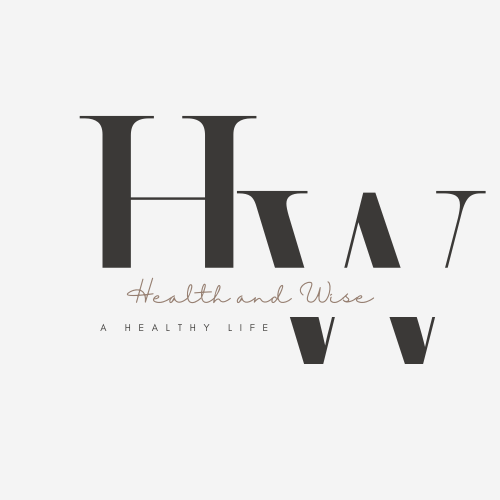Plant-Powered Weight Loss: Boost Health with More Fruits & Veggies
Introduction
Are you seeking a natural and sustainable approach to weight loss that enhances your overall health? Look no further than Plant-Powered Weight Loss: Boost Health with More Fruits & Veggies. By embracing a plant-based diet, you can effectively shed those extra pounds while nourishing your body with essential nutrients. In this comprehensive guide, we’ll delve into the myriad benefits of plant-based eating, practical tips for getting started, and delicious recipes to inspire your journey. Get ready to transform your health with the power of plants!
What is a Plant-Based Diet and Why Should You Try It?
A plant-based diet emphasizes foods derived from plants, including fruits, vegetables, nuts, seeds, oils, whole grains, legumes, and beans. Contrary to popular belief, adopting a plant-based diet doesn’t mean you must become vegetarian or vegan. Instead, it involves making a conscious effort to choose more plant-derived foods over animal products.
Benefits of a Plant-Based Diet
- Weight Loss: Plant-based diets are rich in fiber, promoting feelings of fullness with fewer calories.
- Improved Heart Health: Reducing animal product consumption can lower the risk of heart disease.
- Better Blood Sugar Control: Plant-based eating helps prevent and manage diabetes.
- Lower Cancer Risk: Certain plant foods are linked to a reduced risk of various cancers.
- Digestive Health: High-fiber plant foods promote healthy digestion and prevent constipation.
Types of Plant-Based Diets
Mediterranean and Vegetarian Diets
The Mediterranean diet is a plant-based eating pattern that emphasizes fruits, vegetables, whole grains, legumes, nuts, and olive oil. It includes moderate consumption of fish and poultry, and limited intake of dairy and red meat. This diet is renowned for its heart health benefits.
Vegetarian diets exclude meat but may include other animal products such as dairy and eggs. There are various types of vegetarian diets, including lacto-ovo (includes dairy and eggs), lacto (includes dairy but not eggs), and ovo (includes eggs but not dairy).
Vegetarian Diet Variety
Vegetarian diets can be quite diverse, offering a wide range of foods and flavors. Some common variations include:
- Lacto-Ovo Vegetarian: Includes dairy and eggs.
- Lacto Vegetarian: Includes dairy but excludes eggs.
- Ovo Vegetarian: Includes eggs but excludes dairy.
- Pescatarian: Includes fish and seafood but excludes other meats.
- Vegan: Excludes all animal products.
Getting Started with a Plant-Based Diet
8 Ways to Get Started with a Plant-Based Diet
- Start Slow: Gradually reduce meat and increase plant-based foods.
- Plan Your Meals: Make a weekly meal plan that focuses on plant-based recipes.
- Experiment with New Recipes: Try new plant-based recipes to keep your meals exciting.
- Stock Up on Staples: Keep your pantry stocked with plant-based essentials like beans, grains, and nuts.
- Eat a Rainbow: Include a variety of colorful fruits and vegetables in your diet.
- Find Plant-Based Alternatives: Swap out meat and dairy with plant-based alternatives.
- Educate Yourself: Learn about the nutritional needs and how to meet them with a plant-based diet.
- Seek Support: Join plant-based communities or find a buddy to share your journey.
Inspiration for Plant-Based Eating Throughout the Day
Breakfast:
- Smoothie bowls with fruits, nuts, and seeds.
- Overnight oats with berries and almond milk.
- Avocado toast with whole grain bread.
Lunch:
- Quinoa salad with chickpeas, cucumbers, and tomatoes.
- Vegetable stir-fry with tofu and brown rice.
- Lentil soup with whole grain bread.
Dinner:
- Black bean tacos with corn, avocado, and salsa.
- Spaghetti squash with marinara sauce and veggies.
- Baked sweet potatoes with black beans and a side of greens.
Health Benefits of a Plant-Based Diet
Meeting Daily Requirements of Vitamins and Minerals
A well-planned plant-based diet can meet all your nutritional needs. Key nutrients to focus on include:
- Protein: Beans, lentils, tofu, nuts, and seeds.
- Iron: Leafy greens, legumes, and fortified cereals.
- Calcium: Fortified plant milks, tofu, and leafy greens.
- Vitamin B12: Fortified foods or supplements.
- Omega-3 Fatty Acids: Flaxseeds, chia seeds, and walnuts.
Lowering Risk of and Helping Manage Health Problems
Heart Disease: A plant-based diet can lower cholesterol and blood pressure, reducing the risk of heart disease.
Cancer: Antioxidant-rich plant foods help protect cells from damage and reduce cancer risk.
Cognitive Decline: Nutrient-dense plant foods support brain health and reduce the risk of cognitive decline.
Diabetes: Plant-based diets improve insulin sensitivity and help manage blood sugar levels.
Weight Loss and Management
Plant-based diets are effective for weight loss because they are lower in calories and higher in fiber compared to animal-based diets. Fiber helps you feel full longer, reducing the overall calorie intake. Additionally, plant-based diets are rich in water content, adding volume without calories, which helps with satiety.
Foods to Eat on a Plant-Based Diet
- Beans: Rich in protein and fiber.
- Sweet Potatoes: High in vitamins and minerals.
- Kimchi: Fermented food that promotes gut health.
- Nuts: Great source of healthy fats.
- Peanut Butter: High in protein and healthy fats.
- Farro: Ancient grain rich in fiber and nutrients.
- Tofu: Versatile protein source.
- Broccoli: Packed with vitamins and antioxidants.
- Chimichurri Sauce: Flavorful addition to many dishes.
- Brightly Colored Fruits and Veggies: Rich in antioxidants and nutrients.
Plant-Based Diet Meal Plan
Breakfast:
- Smoothie with spinach, banana, almond milk, and chia seeds.
- Oatmeal with berries, flaxseeds, and a drizzle of maple syrup.
Lunch:
- Quinoa salad with roasted vegetables and tahini dressing.
- Chickpea wrap with avocado, lettuce, and tomatoes.
Snack:
- Carrot sticks with hummus.
- Apple slices with almond butter.
Dinner:
- Stir-fried vegetables with tofu and brown rice.
- Spaghetti with lentil Bolognese sauce.
Dessert:
- Chia pudding with coconut milk and fresh mango.
- Dark chocolate dipped strawberries.
Plant-Based Diet Recipes
Fun, Quick, Plant-Based Recipes
Breakfast:
- Berry Smoothie Bowl: Blend frozen berries, banana, and plant milk. Top with granola and fresh fruits.
- Avocado Toast: Mash avocado on whole grain toast and sprinkle with salt, pepper, and red pepper flakes.
Lunch:
- Quinoa and Black Bean Salad: Mix cooked quinoa, black beans, corn, bell peppers, and cilantro with lime dressing.
- Vegetable Wrap: Fill a whole grain wrap with hummus, sliced veggies, and greens.
Dinner:
- Stuffed Bell Peppers: Fill bell peppers with a mixture of brown rice, black beans, corn, and salsa. Bake until tender.
- Lentil Soup: Simmer lentils with carrots, celery, onions, and vegetable broth until tender. Season to taste.
Whole-Foods, Plant-Based Diet: A Detailed Beginner’s Guide
What is a Whole-Foods, Plant-Based Diet?
A whole-foods, plant-based diet emphasizes whole, unprocessed foods derived from plants. This means focusing on fruits, vegetables, whole grains, legumes, nuts, and seeds, while minimizing or avoiding processed foods, oils, and animal products.
It Can Help You Lose Weight and Improve Your Health
Whole foods are nutrient-dense and low in calories, making them ideal for weight loss. They also provide essential nutrients that support overall health, such as fiber, vitamins, and minerals.
It Benefits a Number of Health Conditions
Heart Disease: Whole, plant-based foods can lower cholesterol and blood pressure, reducing heart disease risk.
Cancer: Antioxidant-rich foods protect against cellular damage and lower cancer risk.
Cognitive Decline: Nutrient-rich diets support brain health and reduce cognitive decline risk.
Diabetes: Whole foods improve insulin sensitivity and blood sugar control.
Adopting a Whole-Foods, Plant-Based Diet is Good for the Planet
A plant-based diet reduces the environmental impact associated with meat production. It uses fewer resources and produces less greenhouse gas emissions, contributing to a healthier planet.
Foods to Eat on a Whole-Foods, Plant-Based Diet
- Fruits and Vegetables: Fresh, frozen, or canned without added sugars or salt.
- Whole Grains: Brown rice, quinoa, oats, barley, and whole wheat.
- Legumes: Beans, lentils, chickpeas, and peas.
- Nuts and Seeds: Almonds, walnuts, chia seeds, and flaxseeds.
A Whole-Foods, Plant-Based Shopping List
- Fresh fruits and vegetables
- Whole grains like brown rice, quinoa, and oats
- Beans and lentils
- Nuts and seeds
- Plant-based milks like almond milk or soy milk
- Natural sweeteners like maple syrup or dates
Foods to Avoid or Minimize on this Diet
Foods to Avoid:
- Processed foods with added sugars and fats
- Refined grains like white bread and pasta
- Sugary beverages
- Animal products (meat, dairy, eggs)
Foods to Minimize:
- Oils and fats, even plant-based ones
- Salt and sodium-rich foods
- Alcohol and caffeine
Sample Meal Plan
Breakfast: Overnight oats with almond milk, chia seeds, and fresh berries.
Lunch: Lentil and vegetable stew with a side salad.
Snack: Apple slices with almond butter.
Dinner: Stir-fried tofu with broccoli, bell peppers, and brown rice.
Dessert: Chia pudding with coconut milk and fresh mango.
Practical Tips for Transitioning to a Plant-Based Lifestyle
Gradual Shifts for Long Term Success
Transitioning to a plant-based diet doesn’t have to happen overnight. Start by incorporating more plant-based meals into your routine and gradually reducing animal products. This approach makes the transition more sustainable and manageable.
Experiment with Flavorful Plant-Based Recipes
Try new recipes and explore different cuisines to keep your meals exciting. There are countless delicious plant-based dishes to discover, from hearty stews to refreshing salads.
Stay Hydrated and Listen to Your Body
Drink plenty of water throughout the day and pay attention to your body’s hunger and fullness cues. Eating a variety of plant-based foods will ensure you get the nutrients you need.
Convenience and Prep Hacks
Meal Prep: Plan and prepare your meals in advance to make plant-based eating convenient. Cook large batches of grains and legumes, and chop vegetables ahead of time.
Precautions: Ensure you’re getting all essential nutrients, especially if you have dietary restrictions or health conditions. Consider consulting a nutritionist or healthcare provider for personalized advice.
Conclusion
Switching to a plant-based diet can be a game-changer for your health and weight loss journey. By focusing on whole, nutrient-dense foods, you can enjoy a variety of delicious meals while improving your overall well-being. Start slow, experiment with new recipes, and enjoy the benefits of a plant-powered lifestyle.
Additional Resources
- Recent Blog Articles:
- “A Guide to Healthy Eating: Strategies, Tips, and Recipes to Help You Make Better Food Choices”
- “Healthy Grilling Hacks: Delicious and Nutritious Recipes for July”
Community and Engagement
- Browsing Categories: Explore more topics on our blog.
- Follow Us: Stay updated with our latest posts and tips.
- We Think You Would Also Like…
- “Frozen Banana Yogurt Pops by Chef Hibah”
- “Cool Down with Healthy Smoothies and Shakes”
By following these guidelines and incorporating more fruits and vegetables into your diet, you’ll be on your way to achieving your weight loss goals and improving your overall health. Enjoy the journey to a healthier, plant-powered you!

